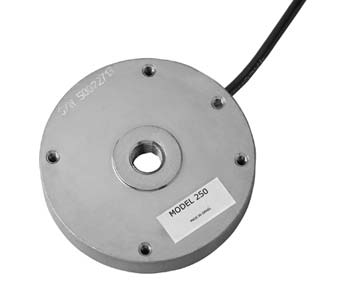
|
描述
The Model 250 is a low-profile, pancake-type load cell, especially designed for use in elevators. Model 250 is equipped with a built-in amplifier and is commonly placed between the inner and outer cages of the elevators cabin.
The number of load cells required depends upon the cabin size and ranges from two to eight load cells (some
may be dummies).
Model 250 is used for 3 reasons:
1. Safety—The load cell is an overload sensor, that indicates when the weight in the elevator passes a certain value that was set by the elevator designers. It also can be used to prevent a child from using the elevator; for example, the elevator control system can prevent movement if a demand from a low-weight user (a child) is made.
2. Traffic Control—The load cell is a sensor that transmits load information to the elevator control system, used in buildings with more than one elevator. This information can be used to decide which elevator to send to a user, taking into account the load in the elevator, in order to shorten waiting time or prevent full/semi full elevators from stopping.
3. Energy Saving—The load cell is a sensor that transmits load information to the elevator control system, used in buildings with more than one elevator. This information is used in energy saving algorithms of the control system.
A common elevator is constructed from an external cage with an internal cabin. The cabin is positioned on several rubber dampers, according to its size. Load cells (or dummies) are located between these dampers and the cabin (under the cabin). The number of load cells depends on the design.
特征
• Used in elevators for safety, traffic control and energy control
• Low profile
• Amplified output (0.4–12.4 VDC)
• Located under the inner cage
应用
Load Cell for Elevators
电梯专用传感器 |

